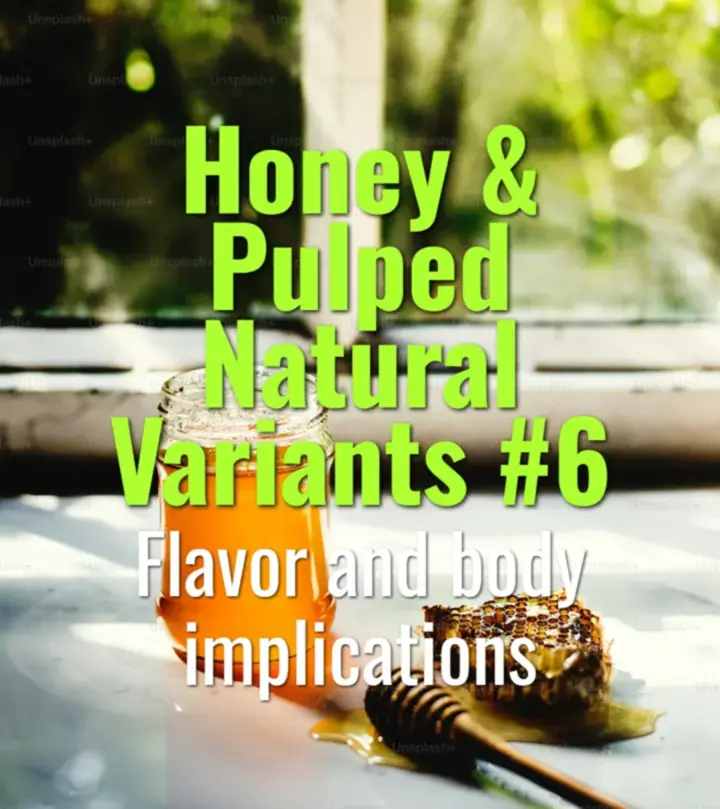Flavor and body implications
This topic explains how different honey and pulped natural processes influence the flavor and body of coffee, highlighting the spectrum from clean and bright to sweet and syrupy.
- Coffee Basics Nerds
- 2 min read
Article 6 of 12 in Honey & Pulped Natural Variants/

Flavor Implications by Honey Color
White Honey
- Clean, crisp, closer to washed coffees.
- Bright acidity with lighter fruit notes.
- Subtle sweetness; delicate flavor clarity.
Yellow Honey
- Balanced profile between washed and natural.
- Sweetness enhanced, moderate fruit presence.
- Medium acidity, medium body.
Red Honey
- Rich, fruity, and syrupy flavor.
- Notes of red fruits, dried fruits, and honey-like sweetness.
- Heavier body, rounder mouthfeel.
Black Honey
- Intensely sweet, winey, and complex.
- Tropical fruits, jammy flavors, and floral undertones.
- Very heavy body with lingering finish.
Body Implications
- Lower mucilage (white/yellow): Lighter body, higher clarity, more acidity.
- Higher mucilage (red/black): Fuller body, heavier mouthfeel, lower perceived acidity.
Factors Influencing Outcomes
- Mucilage percentage: Directly shapes sweetness and body.
- Drying rate: Slow drying enhances fruit intensity; rapid drying favors clarity.
- Microbial activity: More mucilage = more fermentation influence, boosting fruitiness.
Market Preferences
- Specialty cafés: Seek diversity; may favor red/black honey for exotic profiles.
- Traditional buyers: Often prefer white/yellow honey for balance and cleanliness.
- Competition coffees: Red/black honey often chosen for complexity and impact.
Challenges
- Higher mucilage honeys (red/black) risk defects if drying poorly managed.
- Profiles may be polarizing: some drinkers love winey intensity, others prefer washed-like clarity.
Lasting Importance
Flavor and body implications of honey processing demonstrate the direct link between mucilage retention and sensory outcomes. By adjusting honey color, producers can craft coffees that range from clean and bright to bold and syrupy, meeting diverse market demands and showcasing the versatility of processing.
You might also like:
- Tags:
- Lasting Importance
- Flavor Clarity
- Sweetness Body
- Lighter Body
- Sensory Outcomes
- Microbial Activity
- Red Black
- Bright Acidity
- Black Honey
- Flavor Notes
- Heavier Body
- White Yellow
- Honey Processing
- Heavy Body
- Clean Bright
- Factors Influencing
- Slow Drying
- Washed Natural
- Red Honey
- Yellow Honey
- Washed Coffees
- Medium Body
- Risk Defects
- Poorly Managed
- Fuller Body
- Body Higher
- Perceived Acidity
- Flavor Body
- Fruit Notes
- Mucilage Retention
- Tropical Fruits
- Heavier Mouthfeel
- Defects Drying
- White Honey